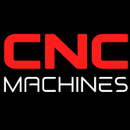Effective Strategies to Optimize Costs in CNC Machining

Effective Strategies to Optimize Costs in CNC Machining
CNC machining services are often perceived as expensive, but this cost reflects the precision, technology, and expertise involved in producing high-quality parts. Let's delve into the factors contributing to the pricing of CNC services.
🛠️ Factors Contributing to CNC Machining Costs
1. Advanced Machinery and Equipment
CNC machines are sophisticated tools requiring significant investment. High-end 5-axis CNC machines can cost upwards of $500,000. These machines offer unparalleled precision and versatility, justifying their expense. The cost of the machinery is amortized over its operational life, contributing to the hourly rates charged by machine shops.
2. Skilled Labor
Operating CNC machines isn't just about pressing buttons; it requires skilled machinists who can program, set up, and monitor the machining process. These professionals ensure that parts meet exact specifications, and their expertise commands competitive wages.
3. Material Costs
The choice of material significantly impacts the overall cost. For instance, materials like titanium or Inconel are more expensive and harder to machine compared to aluminum or plastics. Additionally, harder materials increase tool wear, leading to higher maintenance and replacement costs.
4. Complexity of Design
Intricate designs with tight tolerances require more time and specialized tooling. Complex parts may necessitate multiple setups or specialized fixtures, increasing both labor and machine time.
5. Setup and Programming Time
Each new part requires setup and programming, which includes creating or adjusting CNC programs, setting up tools, and configuring the machine. Even for small batches, this initial time investment is necessary and contributes to the overall cost.
6. Post-Processing and Finishing
After machining, parts often require additional processes like deburring, polishing, anodizing, or painting. These finishing steps add to the labor and time involved, thereby increasing costs.
💡 Tips to Optimize CNC Machining Costs
While certain factors are inherent to CNC machining, there are ways to manage and potentially reduce costs:
- Design for Manufacturability (DFM): Simplify designs to reduce complexity, minimize tight tolerances where possible, and avoid unnecessary features that complicate machining.
- Material Selection: Choose materials that are easier to machine and more cost-effective, provided they meet the part's functional requirements.
- Batch Production: Producing parts in larger quantities can spread setup and programming costs over more units, reducing the cost per part.
- Collaborate with Machinists: Engage with your CNC service provider early in the design process to gain insights into cost-saving opportunities.
📈 Conclusion
The expense associated with CNC machining services is a reflection of the precision, technology, and expertise required to produce high-quality components. By understanding the factors that contribute to these costs, businesses can make informed decisions, optimize designs, and collaborate effectively with machining partners to achieve both quality and cost-efficiency.


